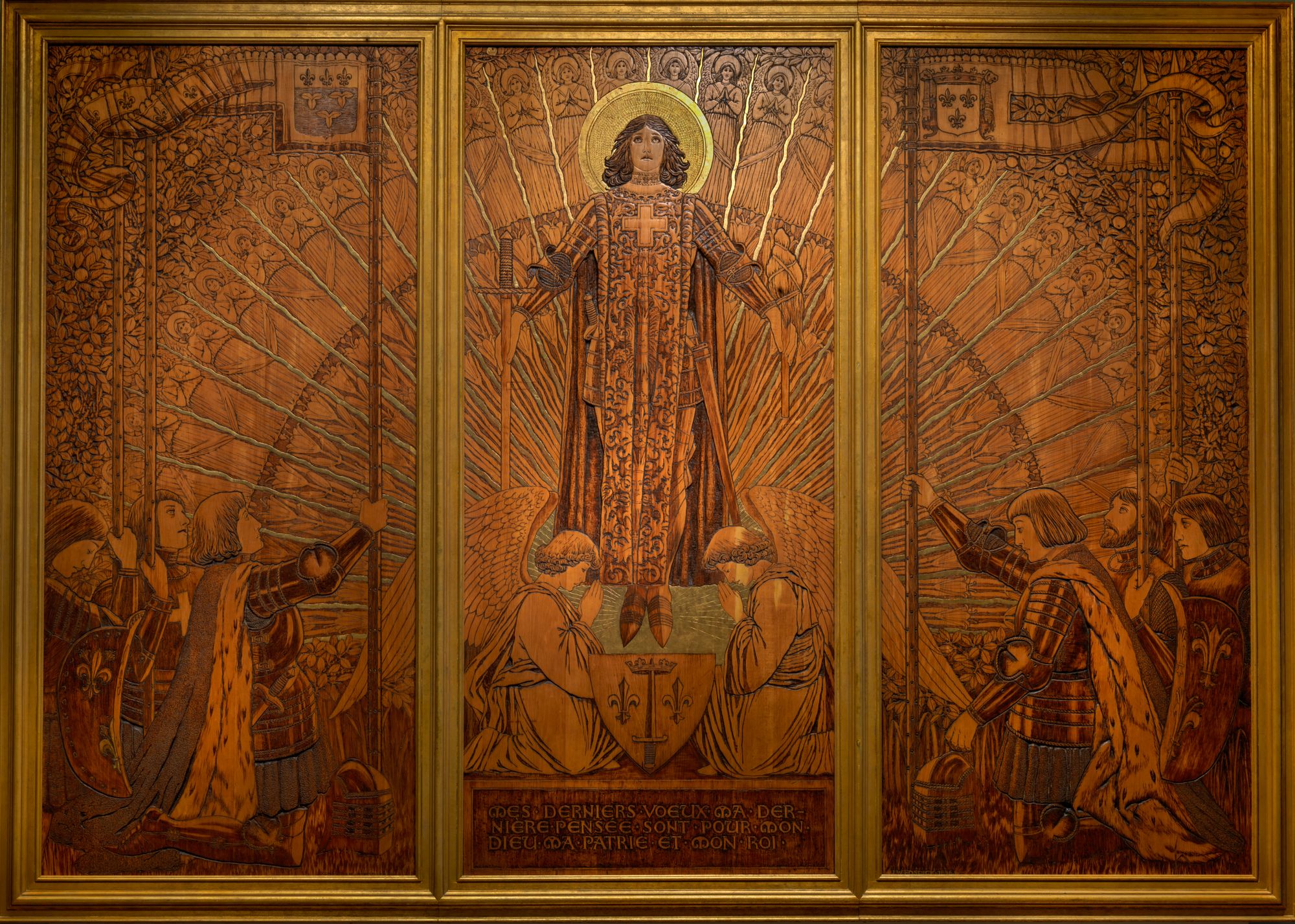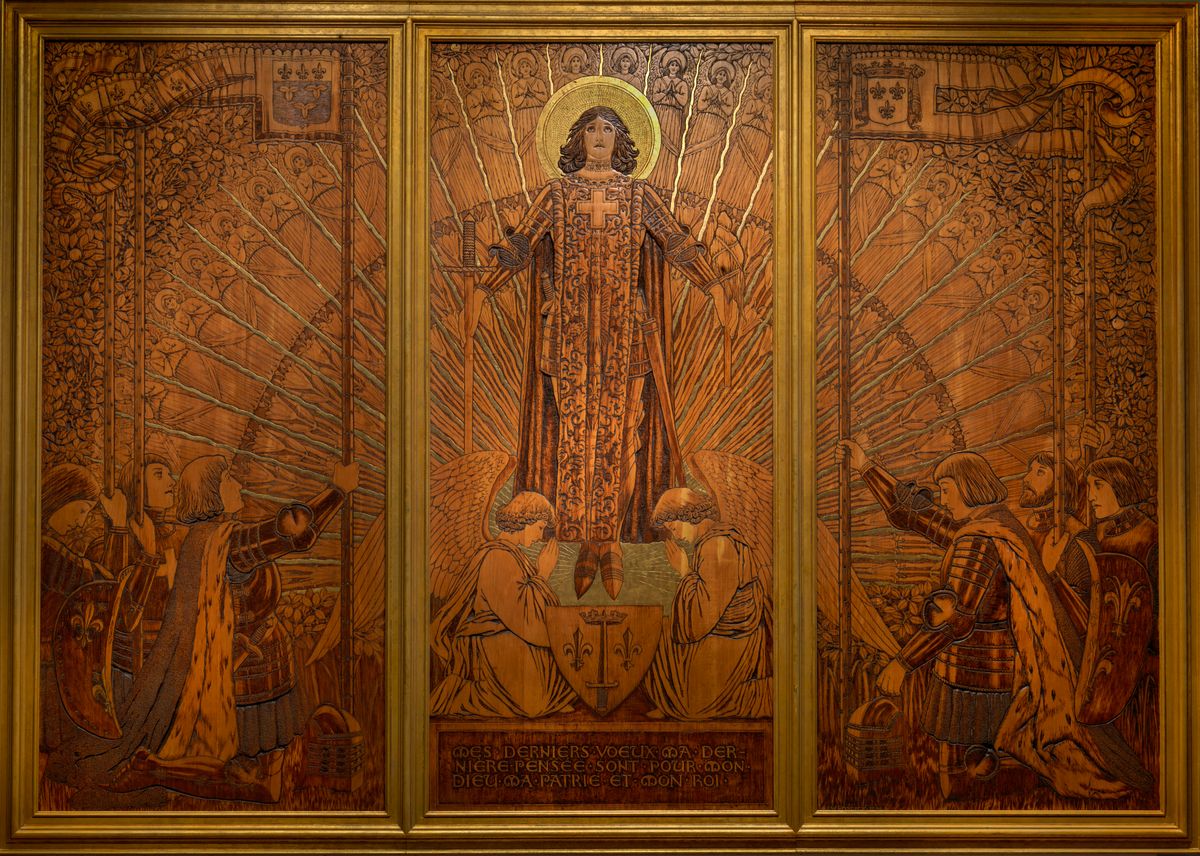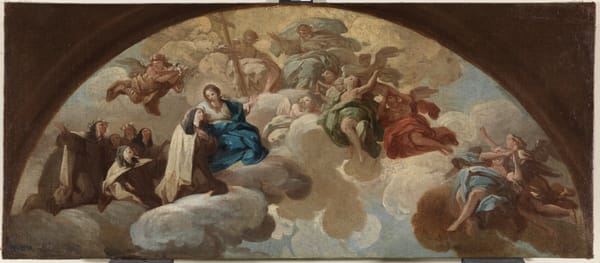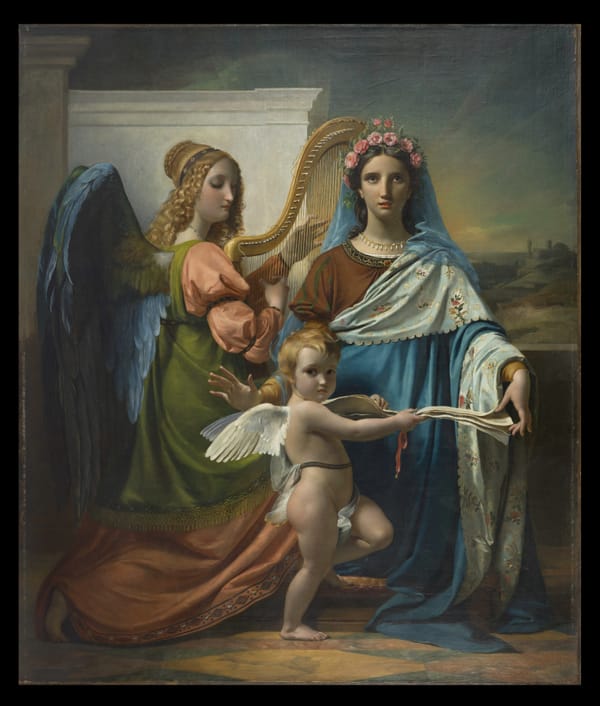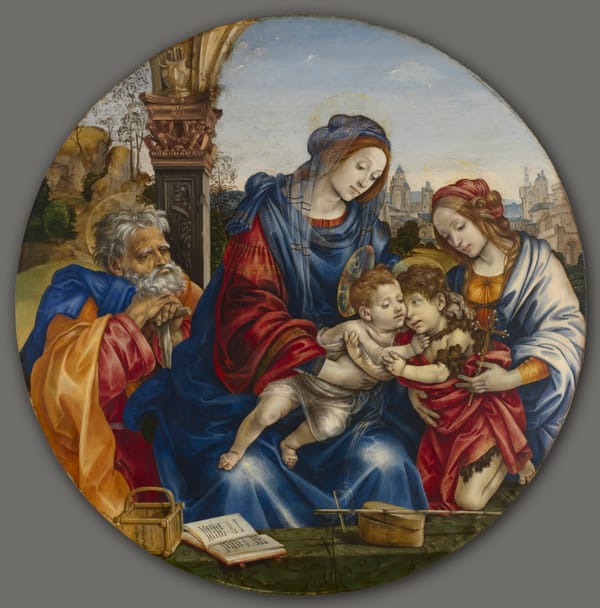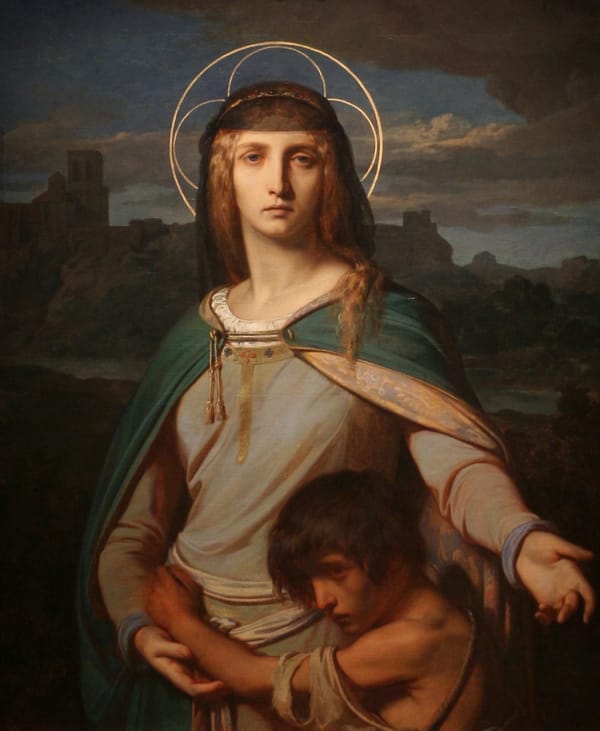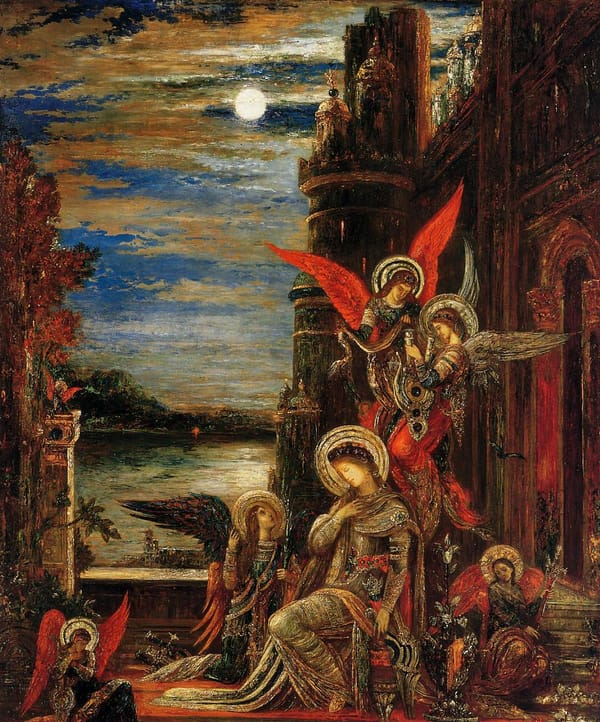Details:
Fosdick made this relief to appeal to wealthy industrialists who favored richly designed interiors and uplifting art. He tapped into the fantasy of a more spiritual past, and when the screen was exhibited, it was praised for craftsmanship that rivaled a medieval masterwork.
At the turn of the twentieth century, Joan of Arc was a popular symbol in American culture. Mark Twain wrote about her in 1896, Anna Hyatt Huntington created a sculpture of the martyr for Riverside Drive in New York, and George Bernard Shaw’s famous play about her was first produced on Broadway in 1923. She could be a figure from the romantic past and an emblem of the “New Woman” in the modern world. Joan may have died for king and countryas the legend at the bottom of the screen recordsbut her symbolic power as a woman who took history into her hands also resonated among women fighting for the right to vote.
Exhibition Label, Smithsonian American Art Museum, 2006
